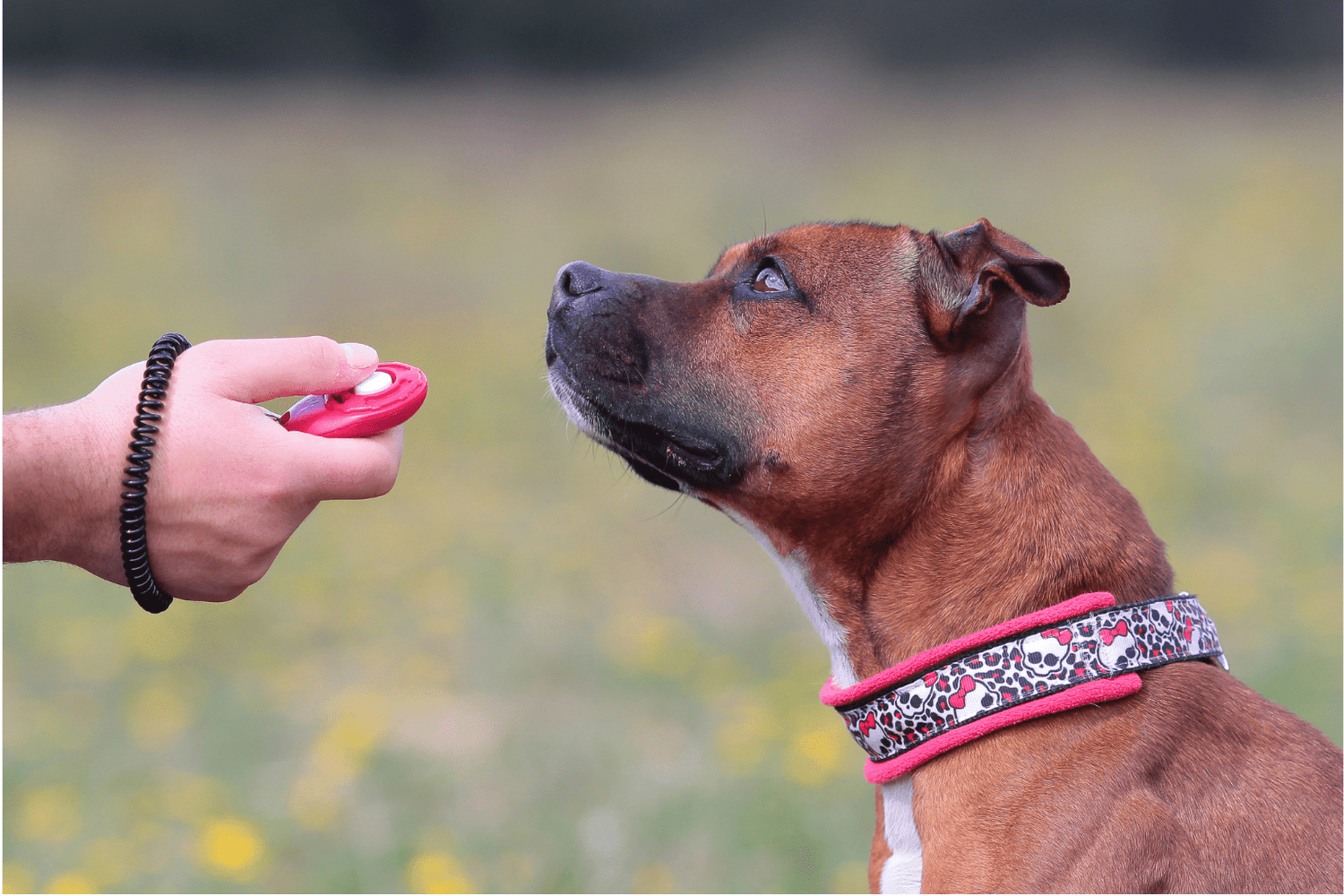Key Takeaways
- Dog clicking is a gentle training method that helps build a strong bond between pets and their owners.
- This approach avoids harsh corrections and reduces stress for dogs during training.
- Clicker training aligns well with natural and nurturing pet wellness philosophies.
- Many pet parents have successfully transformed their training experience using dog clicking.
Table of Contents
- What Is Dog Clicking? Demystifying Clicker Training for Modern Pet Parents
- How Does Clicker Training Really Work? The Science Behind the Click
- Getting Started: Your First Clicker Session in 5 Simple Steps
- Essential Commands Every Dog Should Master Through Clicking
- Real-World Solutions: Using Clicker Training for Common Behavior Issues
- Clicker Training vs. Other Methods: How Does It Stack Up for Our Pets?
- Overcoming Common Clicker Training Challenges
- Bringing Out the Best, Advanced Clicker Training Tips for Lifelong Wellness
- Partnering with Nature, How Clicker Training Complements BestLife4Pets Remedies
- More Support for Our Community, Trusted Clicker Resources and Beyond
- Supporting Natural Wellness with Clicker Training
- Choosing Your Clicker Training Approach
- Long-Term Success and Wellness
Dog Clicking Made Easy, Gentle Training That Works
If you've heard about dog clicking but aren't sure what it means, you're not alone. This gentle training method has transformed how thousands of pet parents connect with their dogs, without harsh corrections or stress. As someone who's spent years championing natural approaches to pet wellness, I've seen firsthand how clicker training aligns beautifully with our "nurture with nature" philosophy.
Clicker training uses a small device that makes a distinct "click" sound to mark the exact moment your dog does something right. It's precise, positive, and incredibly effective for building trust while teaching everything from basic commands to complex behaviors. Pet Relax Dog Calming Anxiety Relief can be a helpful companion for dogs who are nervous or easily distracted during training.
For pet parents who want to support their dog's overall health while training, consider integrating Dog Allergy Relief & Immune Support into your routine to help maintain wellness as your dog learns new behaviors.
What Is Dog Clicking? Demystifying Clicker Training for Modern Pet Parents
Quick Definition: Dog clicking (clicker training) is a positive reinforcement method that uses a small clicking device to mark desired behaviors, followed immediately by a reward.
Dog clicking originated from marine mammal training in the 1940s, where trainers needed a way to communicate precisely with dolphins and whales from a distance. The method made its way into dog training because it works with your pet's natural learning patterns rather than against them.
Unlike traditional training that often focuses on correcting "wrong" behaviors, clicker training celebrates what your dog does right. When Bailey, a rescue Golden in our community, learned to greet visitors calmly using gentle clicking sessions, his owner Sarah told us: "It felt like we were finally speaking the same language, no stress, just understanding."
This approach resonates with natural-minded pet parents because it builds confidence and strengthens your bond without relying on intimidation or fear-based methods.
How Does Clicker Training Really Work? The Science Behind the Click

The magic happens through something called conditioned reinforcement. Think of the click as snapping a photo of the exact moment your dog does something wonderful, it captures that behavior in time and tells your pup "Yes, that's exactly what I wanted!"
Timing is everything. You have roughly one second after the desired behavior to click, or your dog won't connect the sound to their action. This precision is why clickers work better than verbal praise alone, your voice might come too late or sound different depending on your mood.
Research published in the Journal of Veterinary Behavior shows that dogs trained with positive reinforcement methods like clicking learn faster and retain behaviors longer than those trained with correction-based approaches. The click becomes a bridge between the behavior and the reward, creating clear communication that reduces confusion and builds confidence.
Getting Started: Your First Clicker Session in 5 Simple Steps
Before teaching any commands, you need to "charge the clicker", helping your dog understand that click equals good things coming.
Step 1: Hold the clicker in your non-dominant hand, treats (pea-sized) in the other.
Step 2: Click once, immediately give a treat. Repeat 10-15 times.
Step 3: Take a break. Your dog's brain needs time to process.
Step 4: Repeat for 3-5 days until your dog perks up at the click sound.
Step 5: Test it, click when your dog isn't looking. If they turn toward you expectantly, you're ready for actual training.
Keep sessions short (5-10 minutes) and always end on a positive note. Your dog should be eager for the next session, not overwhelmed.
Essential Commands Every Dog Should Master Through Clicking
Teaching "Sit": Hold a treat slightly above your dog's nose. As their head follows the treat up, their bottom naturally goes down. The instant it touches the ground, click and treat. Most dogs master this in 10-20 repetitions over a few days.
Building "Stay": Start with your dog in a sit. Take one small step back. If they stay put for even one second, click and return to reward them in position. Gradually increase distance and duration.
Reliable "Come": Begin in a small, enclosed space. Say "come" in a happy voice, and when your dog moves toward you, click and celebrate with treats and praise.
Even senior dogs can learn these basics. My late Border Collie mix Tango was 15 when he learned to "touch" my hand on cue, proof that gentle, positive methods work at any age.
Real-World Solutions: Using Clicker Training for Common Behavior Issues

| Problem | Clicker Solution | Expected Timeline |
|---|---|---|
| Excessive barking | Click during quiet moments, reward calm behavior | 1-2 weeks |
| Jumping on people | Click the moment paws hit the floor, ignore jumping | 3-7 days |
| Leash pulling | Click when leash is loose, stop moving when tight | 2-3 weeks |
The key is consistency. Click and reward the behavior you want to see more of, while gently redirecting unwanted behaviors. For dogs dealing with noise sensitivity or reactivity, Peaceful Paws can help support a calm demeanor during training sessions.
Clicker Training vs. Other Methods: How Does It Stack Up for Our Pets?
When choosing a training approach for your furry family member, understanding how dog clicking compares to other methods helps you make the best decision. Unlike traditional correction-based training that relies on "no" and punishment, clicker training builds confidence while teaching.
| Method | Learning Speed | Stress Level | Bond Impact | Best For |
|---|---|---|---|---|
| Clicker Training | Fast, precise timing | Very low | Strengthens trust | All ages, anxious dogs |
| Treat-Only | Good, less precise | Low | Positive | Food-motivated dogs |
| Verbal Praise | Slower | Low | Warm connection | Attention-seeking pups |
| Correction-Based | Variable | High | Can damage trust | Limited situations |
Research consistently shows that positive reinforcement methods like dog clicking create lasting behavioral changes without the stress hormones triggered by punishment-based approaches. Your dog learns what TO do rather than just what not to do, leading to a happier, more confident companion. For more insight into managing stress in dogs, see how to calm down a stressed dog.
Overcoming Common Clicker Training Challenges
Every pet parent encounters bumps along the training journey, and that's completely normal. The most common challenge? Dogs who startle at the clicker sound. Simply muffle the click under a towel or use a softer "yes!" marker word until your pup builds confidence.
If your dog ignores the click, go back to basics and "recharge" the clicker association. Click, then immediately offer a high-value treat your dog absolutely loves, think tiny pieces of cooked chicken or cheese. Most dogs reconnect the dots within a few sessions.
Rescue Rachel's Success: When her reactive rescue was too anxious for traditional clicking, she started with tongue clicks and gentle praise. Within two weeks, he graduated to a regular clicker and learned "settle" beautifully.
Mistimed clicks happen to everyone, don't stress! Simply give the treat anyway and focus on better timing next round. Your dog won't hold it against you, and consistency matters more than perfection. Most training hurdles resolve naturally within a week or two of patient practice.
Bringing Out the Best, Advanced Clicker Training Tips for Lifelong Wellness

Once your dog masters the basics, dog clicking opens doors to enriching games that keep minds sharp and bodies active. Try "find it" games where you click when your pup discovers hidden treats, or teach "touch" to redirect attention during stressful moments.
Training multiple dogs requires simple management, work with one dog while others wait behind a baby gate, then rotate. This prevents competition and ensures each pup gets focused attention. Many BestLife4Pets families find that their calmer dog actually helps teach the more energetic one through observation.
The real magic happens when you fade the clicker for life rewards. Instead of treats, click and reward with a favorite toy, extra belly rubs, or permission to sniff that interesting tree. This creates a well-rounded dog who responds to training because the relationship itself becomes rewarding.
For more ways to keep your dog active and engaged, explore how to exercise dogs indoors for fun training ideas.
Partnering with Nature, How Clicker Training Complements BestLife4Pets Remedies
Just as dog clicking works with your pet's natural learning instincts, BestLife4Pets remedies support your dog's innate healing abilities. This gentle, side-effect-free combination creates the perfect foundation for anxious or easily distracted dogs who struggle with traditional training.
Our sugar-free pellet remedies can help calm nervous energy before training sessions, supporting focus without drowsiness. Many pet parents find that combining our natural stress support with consistent clicker work helps reactive dogs learn faster and retain commands longer. If your dog struggles with aggression or noise phobia, Peaceful Paws can be a valuable addition to your training toolkit.
Community Success: "Milo went from barking at every sound to calmly 'settling' on cue. The gentle pellets took the edge off his anxiety, and clicker training gave him confidence. Now he's the neighborhood's best-behaved pup!" - Sarah K.
This partnership between positive training and natural wellness reflects our "Nurture with Nature" philosophy, supporting your pet's whole wellbeing without harsh chemicals or stressful methods.
More Support for Our Community, Trusted Clicker Resources and Beyond
The right tools make dog clicking easier and more enjoyable for both of you. Look for clickers with adjustable volume for sound-sensitive dogs, and keep training treats small, about the size of your pinky nail works perfectly for most pups.
Viktoria's Top Picks: Box clickers for easy thumb use, soft fabric treat pouches that don't crinkle, and "Clicking with Your Dog" by Peggy Tillman for deeper techniques
For dogs with joint or mobility issues, pairing training with WALK-EASY® Hip & Joint Pain Relief can help keep them comfortable and eager to participate.
Supporting Natural Wellness with Clicker Training

Just like choosing gentle, natural remedies for our pets' health, dog clicking represents the kinder path to behavioral wellness. This positive approach works beautifully alongside holistic care, no harsh corrections, no stress-induced setbacks that can interfere with healing.
When pets feel confident and secure through consistent, positive training, their overall wellness improves. Reduced anxiety means better sleep, improved digestion, and stronger immune function. It's the same philosophy behind every BestLife4Pets remedy: support the body's natural ability to thrive.
Community Success: "Max learned 'settle' through gentle clicking while taking our calming pellets for his separation anxiety. The combination gave him tools for confidence, no side effects, just progress." - Sarah M., Ontario
Our sugar pellet remedies complement clicker training perfectly. While you're building positive associations with the click, our formulations support focus, calm energy, and emotional balance, creating the ideal learning environment for lasting behavioral change. To learn more about the science behind clicker training, see this external resource on positive reinforcement in animal training.
Choosing Your Clicker Training Approach
Success with dog clicking comes down to consistency and patience, not expensive equipment. Start with basic tools: a simple box clicker, high-value treats cut into pea-sized pieces, and 5-10 minutes of daily practice.
For anxious pets: Begin with muffled clicks (clicker wrapped in a towel) and work in quiet spaces. For senior dogs: Shorter sessions with extra patience often yield beautiful results, Tango mastered new behaviors well into his golden years.
The key is matching your approach to your pet's personality. High-energy dogs might need more physical rewards like brief play sessions, while gentle souls respond beautifully to soft praise paired with the click.
Remember: Every dog learns at their own pace. Some master basics in days, others need weeks. Trust the process and celebrate small victories, that's where the real magic happens. For additional support on joint health and mobility, read about hip dysplasia in dogs, signs, and treatments.
Long-Term Success and Wellness
The beauty of dog clicking extends far beyond basic commands. As your bond strengthens through positive training, you're creating a foundation for lifelong wellness and communication.
Many pet parents find that clicker-trained dogs are more adaptable to new situations, less reactive to stressors, and easier to care for during illness or aging. This gentle approach builds confidence that serves them throughout their lives.
Looking ahead: Consider how clicker training can support your pet's changing needs. Senior dogs benefit from mental stimulation that keeps their minds sharp. Rescue pets gain confidence through predictable, positive interactions. Even cats can learn basic behaviors through modified clicking techniques.
At BestLife4Pets, we believe in nurturing the whole pet, mind, body, and spirit. Whether you're addressing behavioral challenges with gentle training or supporting physical wellness with our natural remedies, the goal remains the same: helping our beloved companions live their best, happiest lives. For a broader selection of natural solutions, explore our natural dog supplements & remedies for common dog health problems. For further reading on how immediate feedback improves learning, see this external article on clicker training for humans.
Not a substitute for professional veterinary advice. Consult your holistic veterinarian for persistent behavioral or health concerns.
Frequently Asked Questions
What is dog clicking and how does clicker training differ from traditional dog training methods?
Dog clicking, or clicker training, is a gentle, positive reinforcement method that uses a small device to make a distinct clicking sound marking desired behaviors. Unlike traditional training that may rely on corrections or commands alone, clicker training clearly communicates the exact moment your dog does something right, reducing stress and building trust.
How does the clicker sound help dogs learn desired behaviors more effectively?
The clicker sound acts as a precise marker that instantly signals to your dog which behavior earned a reward. This clear, consistent communication helps dogs understand what you want without confusion or delay, speeding up learning and strengthening your bond.
What are the basic steps to get started with clicker training for my dog?
Start by introducing the clicker alongside treats so your dog associates the sound with a reward. Then, click the moment your dog performs a desired behavior and immediately follow with a treat. Repeat this in short, positive sessions, gradually adding commands and increasing difficulty as your dog learns.
How can clicker training be combined with natural pet wellness approaches to support my dog's overall health?
Clicker training pairs beautifully with natural wellness by reducing stress during learning and promoting positive experiences. Supporting your dog with gentle remedies like calming supplements or immune support can enhance focus and comfort, helping your pet thrive physically and emotionally throughout training.



